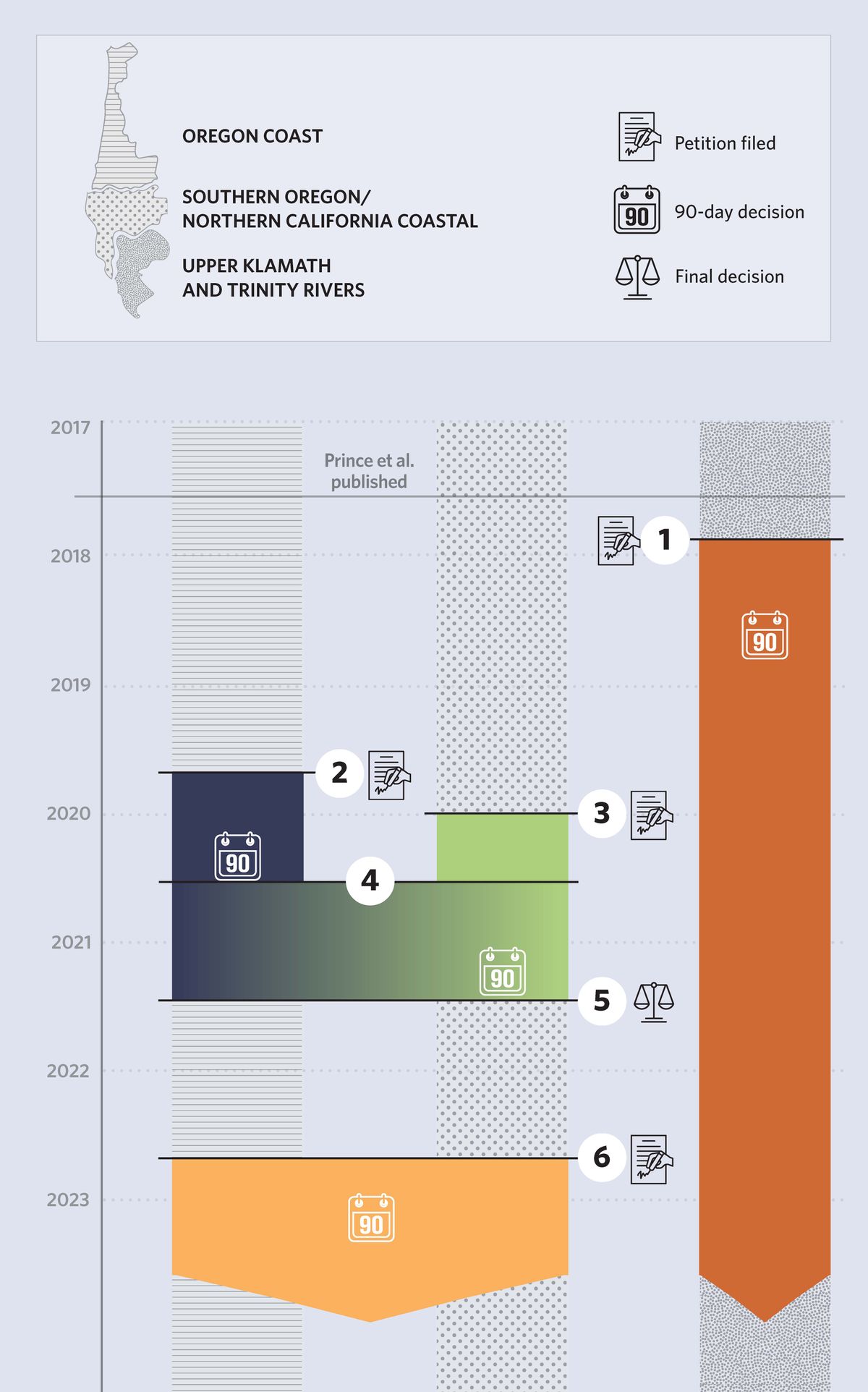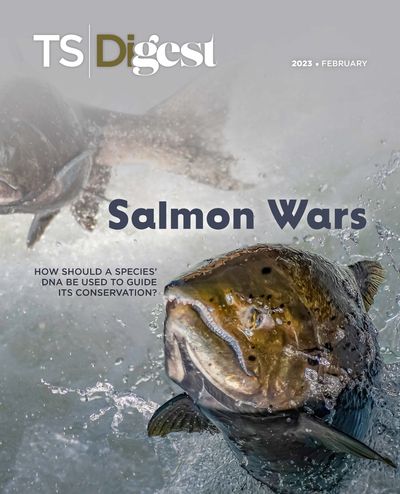Chinook genetic data generated in the first decade and a half of the 21st century revealed notable differences between the populations in different watersheds—but not between spring and fall runs within a watershed. Thus, the available evidence supported the geographically based Evolutionary Significant Unit (ESU) designations that were formalized in March of 1998. Still, given known biological and ecological differences between early- and late-migrating salmon, a petition was filed in 2011 asking NOAA Fisheries to split the spring run of the Upper Klamath and Trinity Rivers ESU into a separate unit or population segment, and to list that segment under the Endangered Species Act (ESA). That petition was denied the next year, though some scientists are still of the opinion that spring runs should have special protection.
In August 2017, a Science Advances paper from Daniel Prince—then a PhD student in Michael Miller’s lab at University of California, Davis—detailed the genetic basis for migration timing, and these data suggested that the evolution of early-migrating alleles occurred only once millions of years ago instead of recently in each watershed, as scientists had previously believed. In light of these findings, petitions were once again filed, seeking ESA listing for spring Chinook.

 | November 2, 2017: A petition is filed for the Upper Klamath and Trinity Rivers ESU asking NOAA to reconsider separating spring and fall runs and list the spring run under the ESA, contrary to the 2012 decision. On February 27, 2018, NOAA releases their 90-day finding that the petitioned actions may be warranted. As of January 2023, no final decision on the petition has been made. |
 | September 24, 2019: A petition is filed for the Oregon Coast ESU, asking NOAA Fisheries to designate the spring run as a separate ESU and list it under the ESA. On April 13, 2020, NOAA’s 90-day finding is that the petitioned actions may be warranted. |
 | April 15, 2020: A petition is filed for the Southern Oregon Northern California Coastal ESU, asking NOAA Fisheries to designate the spring run as a separate ESU and list it under the ESA. NOAA’s 90-day finding, which was delayed until March of 2021, is that the petitioned actions may be warranted. |
 | May 14, 2020: The review panel for the Oregon Coast petition is asked to consider the Southern Oregon and Northern California Coastal Chinook petition alongside the one it’s already reviewing. |
 | May 25, 2021: The review panel decides that splitting the ESUs by migration timing is not warranted and, therefore, no changes are made to ESA listing status for either ESU. |
 | Aug 4, 2022: A petition filed for both the Oregon Coast and Southern Oregon and Northern California Coastal ESUs. Petitioners ask NOAA to consider listing both ESUs, saying that the genetic evidence is clear: Spring runs represent a distinct and essential life history variant, and therefore, the ESUs are in need of protection regardless of the status of fall runs. Alternatively, the spring and fall runs could be split and just the spring runs listed. On January 11, 2023, NOAA’s 90-day decision is that splitting the ESUs by migration timing is not warranted, but listing them as-is may be. The agency is soliciting comments until March 13, 2023. |
Read the full story.
Membership Open House!
Enjoy OPEN access to Premium Content for a limited timeInterested in exclusive access to more premium content?


